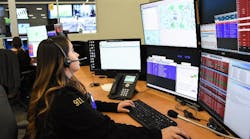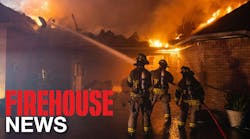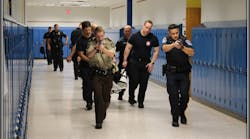Dispatchers. We listen to their voices on every call, but we are only hearing them read what is on their computer screens, not what is on their minds. We receive the location, type of emergency, and hazards present on all alarms, but when it comes to understanding the needs of those on the other side of the microphone, communication often breaks down. To bridge this gap, I conducted a survey of more than 250 active telecommunicators in order to “clear the air.”
The process
During August and September of this year, I used the internet and social media to reach out to fire dispatchers in order to gather information about their service area, management structure, training, technical and operational needs. They were asked to identify concerns that they would like to share with other communications and suppression personnel. The results are presented here. Minor editing has been done in some cases to improve clarity, and to remove content that might have identified the participant or their agency. Percentages have been rounded for the purposes of this report.
What best describes your center?
Responses came from agencies of all sizes. Approximately 25 percent served 50,000 or less, 27 percent between 50,000 and 100,000, 21 percent between 100,000 and 250,000, 14 percent between 250,000 and 500,000 and 13 percent 500,000 and above.
The bulk (59 percent) dispatched multiple services, 14 percent fire and EMS, 14 percent fire and police, 10 percent multiple fire departments, and 3 percent a single fire department only. Thirty-two percent handled only career departments, 13 percent only volunteer, and the largest sample (55 percent) handled both.
Management was provided by the fire department in 16 percent of cases, law enforcement in 34 percent, EMS/EMA in 8 percent, an independent agency in 37 percent, and the private sector in 5 percent.
What training do you receive?
While 64 percent reported formalized initial training augmented by in-service, over 29 percent had no structured learning whatsoever, or less than 80 hours of initial education. Although NFPA 1061: Standard for Public Safety Telecommunications Personnel Professional Qualifications and other documents speak to the qualifications and training of telecommunicators, it should be noted that not all states have codified minimum requirements, leaving the content and quality of training up to local jurisdictions.
What additional training do you feel you need?
Despite the FEMA recommendation that, “Everyone involved in emergency management (to include emergency operation center personnel in support of the field) … should take the NIMS baseline curriculum courses (Independent Study-700 and ICS-100),” a significant number of dispatchers listed ICS or NIMS training and understanding as being absent.
Much concern was also raised about the lack of familiarity with basic fire service terms, technology and procedures. Among the responses garnered here: “The fire department uses technical terms that we have no idea what they mean,” and, “Hazmat awareness—I wouldn’t know what to do if given a chemical name or had to ask someone to meet the fire department with a Material Safety Data Sheet (MSDS).”
Another telecommunicator wanted to know more about new equipment or technology added from the responder point of view: “We are told about it; however, we are not shown what they see or the capabilities it can add to our process in dispatching. Ultimately, the lack of training in this particular area handicaps both responder and dispatcher.” Similarly, another source raised this concern: “We are not trained on equipment prior to implementation. The most recent equipment did not work like it should, which caused dispatchers to add steps to dispatch events.”
A request was also made for, “More fireground training so I can anticipate what the scene and IC will need.” And finally, “More scenario-based exercises. It would be nice to be involved in the fire department’s training, but we are never thought of until the very last minute, if even then.”
In fairness, it should be noted that a very small number of replies indicated that the current level of agency training was adequate, but some comments did contain suggestions regarding improving the methods of delivery.
What are your biggest procedural issues?Although one dispatcher identified as their greatest concern, “People making decisions without considering how they will impact dispatch,” the majority of replies to this question focused on the same issue—standard operating procedures (SOPs) that are anything but standard. In the words of one respondent: “The agencies we dispatch have different procedures. Having multiple agencies to dispatch with different processes/procedures is difficult and leaves room for easily avoidable errors.” From another: “One department uses the computer-aided dispatch (CAD) system to enter their own status … and the other relies solely on the dispatcher for status changes. Two different technical processes create issues for training, accuracy, and creates more chaos instead of structure for the dispatcher.” And another respondent summed it up as simply,” Multiple agencies wanting multiple things.”
Telecommunicators from single department centers also identified procedural anomalies based upon which captain or lieutenant was on watch. Lack of current guidance came in a close second, as succinctly stated, “In the end, there are not really any SOPs to follow so we use our best judgement.” To quote another on this same subject: “Our SOPs are 10 years out of date, and we receive new directives via text, email or pass down. I have not seen my actual supervisors but maybe 5 times in the last 12 months.”
What are your biggest technology issues?
Some answers were very location specific, including one identifying radio problems covering “5,000 square miles of mountainous terrain.” Others were less detailed but more disturbing. For example: “We are very lucky that someone hasn’t gotten seriously hurt or killed because they weren’t able to be heard calling for help over the radio.”
Many were concerned about the age of their equipment overall, including one who summed it up by observing, “My center looks like 1960s NASA Mission Control.”
Next to radios, the most highly criticized system was CAD, with 20 percent of respondents noting problems with this critical equipment. Included among the comments: “There has been significant change in the past six years, but the current CAD is not flexible enough to robustly accommodate that change.”
The fiscal realities of these shortcomings were also recognized: “Cheapest CAD available in these parts. You get what you pay for,” said one. Another reported: “We need some add-ons to our CAD. Forty-thousand dollars’ worth of software, including Premise, Response Plans and Rapid response. But we have no money to pay for it.”
Next month
In the January 2019 issue of Firehouse, dispatchers speak out on thoughts they would like to share with other telecommunicators and first responders, and discuss what would make their jobs easier and more productive.






